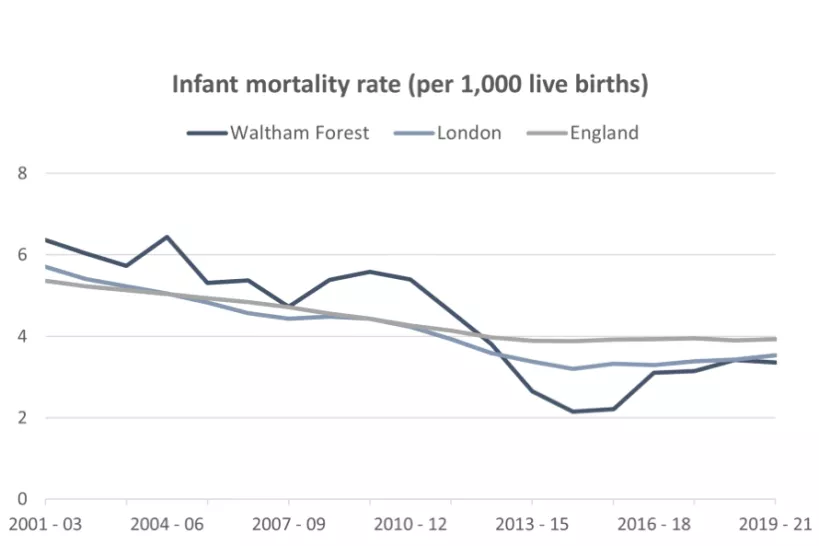Last updated: 3 June 2024
Next review: 3 December 2024
This content is part of the Waltham Forest JSNA. To see other JSNA content, visit the JSNA landing page
The infant mortality rate, which is the number of children that died under 1 year of age per 1,000 live births is an indicator that is used to reflect the general improvements in healthcare, particularly in antenatal and neonatal care. [1] Most deaths in the first year of life in the UK are neonatal deaths occurring in the first month (relating to prematurity and preterm births), followed by congenital anomalies.
Due to relatively small numbers, rates of infant mortality are presented on a three-year rolling basis. In 2019 to 2021, 43 infant deaths were recorded in Waltham Forest, which corresponds to 3.4 deaths per 1,000 live births, the same rate seen in 2018 to 2020. This is slightly lower than both the London (3.5) and England averages (3.9), but is statistically similar, meaning that the differences observed may be due to natural variation in the data.
Infant mortality rates have seen a steady decline over the last 20 years, with rates in England falling from around 5.5 deaths per 1,000 births in 2001 to 03, to around 3.5 per 1,000 births in 2019-21 (a 44% fall). Infant mortality risk is found to increase as deprivation increases, with rates also differing by ethnicity (which is also influenced by deprivation). Children from Black ethnic groups have the highest infant mortality rates, followed by Asian children. [2]

Source: OHID Public Health Outcomes Framework. Data from Office for National Statistics. Date accessed: 07 July 2023.
References:
[1] OHID Fingertips - Public Health Outcomes Framework. Date accessed: 04 June 2023.
[2] ONS - Births and infant mortality by ethnicity in England and Wales: 2007 to 2019. Date accessed: 04 June 2023.